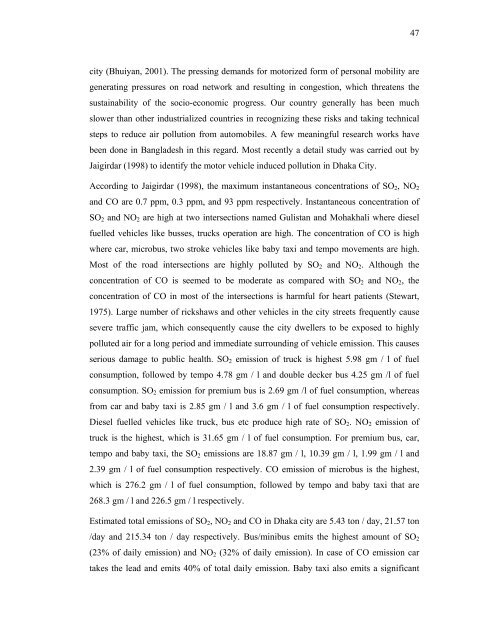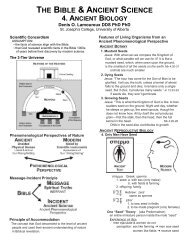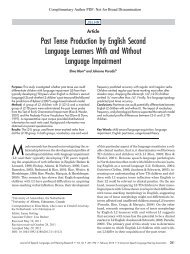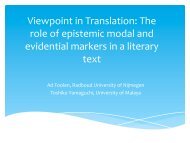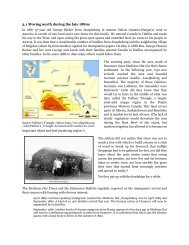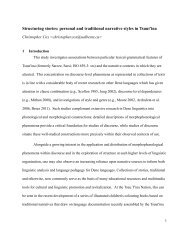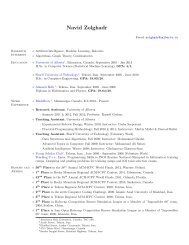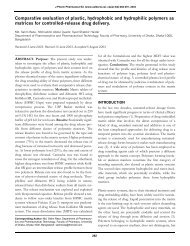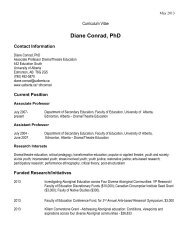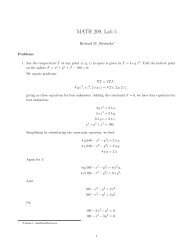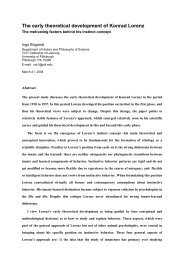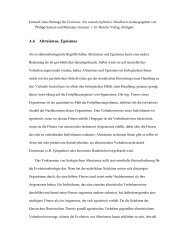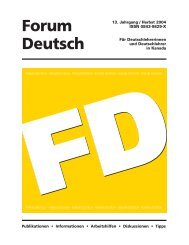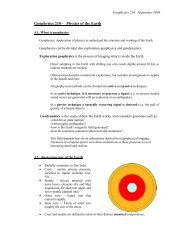Evaluation of Planning Options to Alleviate Traffic Congestion and ...
Evaluation of Planning Options to Alleviate Traffic Congestion and ...
Evaluation of Planning Options to Alleviate Traffic Congestion and ...
You also want an ePaper? Increase the reach of your titles
YUMPU automatically turns print PDFs into web optimized ePapers that Google loves.
47<br />
city (Bhuiyan, 2001). The pressing dem<strong>and</strong>s for mo<strong>to</strong>rized form <strong>of</strong> personal mobility are<br />
generating pressures on road network <strong>and</strong> resulting in congestion, which threatens the<br />
sustainability <strong>of</strong> the socio-economic progress. Our country generally has been much<br />
slower than other industrialized countries in recognizing these risks <strong>and</strong> taking technical<br />
steps <strong>to</strong> reduce air pollution from au<strong>to</strong>mobiles. A few meaningful research works have<br />
been done in Bangladesh in this regard. Most recently a detail study was carried out by<br />
Jaigirdar (1998) <strong>to</strong> identify the mo<strong>to</strong>r vehicle induced pollution in Dhaka City.<br />
According <strong>to</strong> Jaigirdar (1998), the maximum instantaneous concentrations <strong>of</strong> SO 2 , NO 2<br />
<strong>and</strong> CO are 0.7 ppm, 0.3 ppm, <strong>and</strong> 93 ppm respectively. Instantaneous concentration <strong>of</strong><br />
SO 2 <strong>and</strong> NO 2 are high at two intersections named Gulistan <strong>and</strong> Mohakhali where diesel<br />
fuelled vehicles like busses, trucks operation are high. The concentration <strong>of</strong> CO is high<br />
where car, microbus, two stroke vehicles like baby taxi <strong>and</strong> tempo movements are high.<br />
Most <strong>of</strong> the road intersections are highly polluted by SO 2 <strong>and</strong> NO 2 . Although the<br />
concentration <strong>of</strong> CO is seemed <strong>to</strong> be moderate as compared with SO 2 <strong>and</strong> NO 2 , the<br />
concentration <strong>of</strong> CO in most <strong>of</strong> the intersections is harmful for heart patients (Stewart,<br />
1975). Large number <strong>of</strong> rickshaws <strong>and</strong> other vehicles in the city streets frequently cause<br />
severe traffic jam, which consequently cause the city dwellers <strong>to</strong> be exposed <strong>to</strong> highly<br />
polluted air for a long period <strong>and</strong> immediate surrounding <strong>of</strong> vehicle emission. This causes<br />
serious damage <strong>to</strong> public health. SO 2 emission <strong>of</strong> truck is highest 5.98 gm / l <strong>of</strong> fuel<br />
consumption, followed by tempo 4.78 gm / l <strong>and</strong> double decker bus 4.25 gm /l <strong>of</strong> fuel<br />
consumption. SO 2 emission for premium bus is 2.69 gm /l <strong>of</strong> fuel consumption, whereas<br />
from car <strong>and</strong> baby taxi is 2.85 gm / l <strong>and</strong> 3.6 gm / l <strong>of</strong> fuel consumption respectively.<br />
Diesel fuelled vehicles like truck, bus etc produce high rate <strong>of</strong> SO 2 . NO 2 emission <strong>of</strong><br />
truck is the highest, which is 31.65 gm / l <strong>of</strong> fuel consumption. For premium bus, car,<br />
tempo <strong>and</strong> baby taxi, the SO 2 emissions are 18.87 gm / l, 10.39 gm / l, 1.99 gm / l <strong>and</strong><br />
2.39 gm / l <strong>of</strong> fuel consumption respectively. CO emission <strong>of</strong> microbus is the highest,<br />
which is 276.2 gm / l <strong>of</strong> fuel consumption, followed by tempo <strong>and</strong> baby taxi that are<br />
268.3 gm / l <strong>and</strong> 226.5 gm / l respectively.<br />
Estimated <strong>to</strong>tal emissions <strong>of</strong> SO 2 , NO 2 <strong>and</strong> CO in Dhaka city are 5.43 <strong>to</strong>n / day, 21.57 <strong>to</strong>n<br />
/day <strong>and</strong> 215.34 <strong>to</strong>n / day respectively. Bus/minibus emits the highest amount <strong>of</strong> SO 2<br />
(23% <strong>of</strong> daily emission) <strong>and</strong> NO 2 (32% <strong>of</strong> daily emission). In case <strong>of</strong> CO emission car<br />
takes the lead <strong>and</strong> emits 40% <strong>of</strong> <strong>to</strong>tal daily emission. Baby taxi also emits a significant


